My 3rd year program assumes that students now have some solid basics down: Construction, line of action, basic motion. Now I want to take those skills and broaden the students' horizons.
Artists need to learn how to recognize the difference between formula and invention. Animation is full of formula and I would like to see a generation of artists who can break through the formula and start to use their skills as tools in order to create with, rather than simply repeat what has been done to death.
The year is dedicated to honing the cartoonists' observation skills and getting them to be able to apply their observations to their cartooning and animation.
Intense Caricature Study and Application
This is caricature with a purpose: to broaden your creative palette in animation. It's not to become professional caricaturists. It's not to get a caricature style. It's not to imitate someone else's caricature style. In fact, it's intended to cure students of desiring a limiting style.
Every person you draw is uniquely his or her own style, has a unique set of not only features, but expressions, gestures, mannerisms, textures, body language, body shape etc. The style of your caricature should be dictated not by a preset notion of a caricature style, but by the style of the person being observed and dissected.
You want to get ideas from those you observe, you don't want to impose your own notions of what you think looks good onto your model. That's backwards.
 The danger of imitating someone else's style is that you end up imitating their limitations and probably tone down their positive attributes. Hirschfeld is a great designer-caricaturist and unfortunately, much-imitated. What people tend to imitate is a superficial surface of what he does. He doesn't really caricature bodies and he makes everybody look elegant, even though most of his subjects aren't elegant. It works for him and makes for great illustrations, but there is only one Hirschfeld. Drawing spaghetti arms, graphic textures and squinty eyes won't make you the next great caricaturist.
The danger of imitating someone else's style is that you end up imitating their limitations and probably tone down their positive attributes. Hirschfeld is a great designer-caricaturist and unfortunately, much-imitated. What people tend to imitate is a superficial surface of what he does. He doesn't really caricature bodies and he makes everybody look elegant, even though most of his subjects aren't elegant. It works for him and makes for great illustrations, but there is only one Hirschfeld. Drawing spaghetti arms, graphic textures and squinty eyes won't make you the next great caricaturist.
For the purposes of animation, your caricatures should be observant and exploratory rather than imitations of someone else's ideas and filters. Every subject you draw has new information that - if you can capture it, you can use in your own work. If you filter what the real world looks like through some preset notion of style (what things should look like) then you are severely handicapping your creativity.
Your goals in this course will be:
Make it look like the person.
Be Funny.
Learn the mechanics of the person.
To be able to draw a specific set of forms from every angle.
Be able to articulate what you learned from each person you caricature.
Absorb the ability to make new shapes constantly and not rely on traditional cliched animation shapes.
Every person you draw is uniquely his or her own style, has a unique set of not only features, but expressions, gestures, mannerisms, textures, body language, body shape etc. The style of your caricature should be dictated not by a preset notion of a caricature style, but by the style of the person being observed and dissected.
You want to get ideas from those you observe, you don't want to impose your own notions of what you think looks good onto your model. That's backwards.
 The danger of imitating someone else's style is that you end up imitating their limitations and probably tone down their positive attributes. Hirschfeld is a great designer-caricaturist and unfortunately, much-imitated. What people tend to imitate is a superficial surface of what he does. He doesn't really caricature bodies and he makes everybody look elegant, even though most of his subjects aren't elegant. It works for him and makes for great illustrations, but there is only one Hirschfeld. Drawing spaghetti arms, graphic textures and squinty eyes won't make you the next great caricaturist.
The danger of imitating someone else's style is that you end up imitating their limitations and probably tone down their positive attributes. Hirschfeld is a great designer-caricaturist and unfortunately, much-imitated. What people tend to imitate is a superficial surface of what he does. He doesn't really caricature bodies and he makes everybody look elegant, even though most of his subjects aren't elegant. It works for him and makes for great illustrations, but there is only one Hirschfeld. Drawing spaghetti arms, graphic textures and squinty eyes won't make you the next great caricaturist.For the purposes of animation, your caricatures should be observant and exploratory rather than imitations of someone else's ideas and filters. Every subject you draw has new information that - if you can capture it, you can use in your own work. If you filter what the real world looks like through some preset notion of style (what things should look like) then you are severely handicapping your creativity.
Your goals in this course will be:
Make it look like the person.
Be Funny.
Learn the mechanics of the person.
To be able to draw a specific set of forms from every angle.
Be able to articulate what you learned from each person you caricature.
Absorb the ability to make new shapes constantly and not rely on traditional cliched animation shapes.
Students will pick either other students, teachers, family or film and TV actors and study not only what their faces look like in repose, but how their facial mechanics work for different expressions.


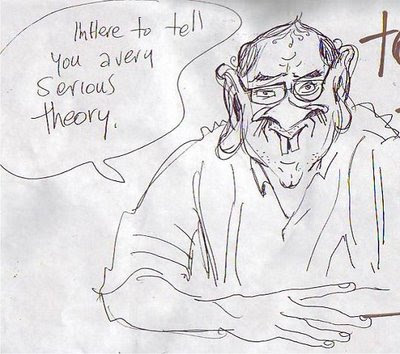
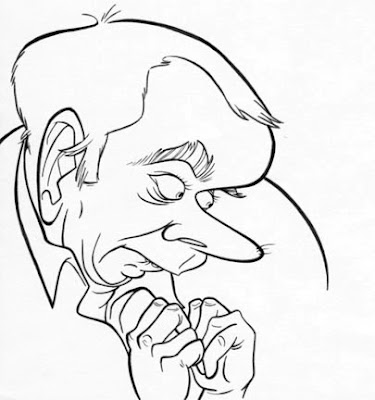
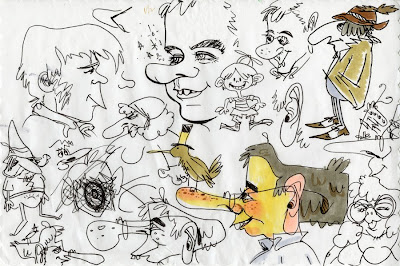
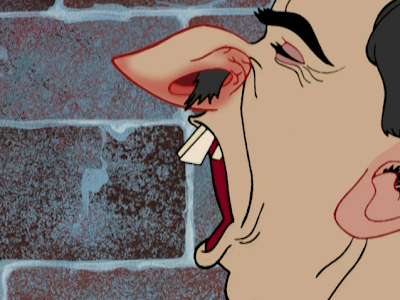
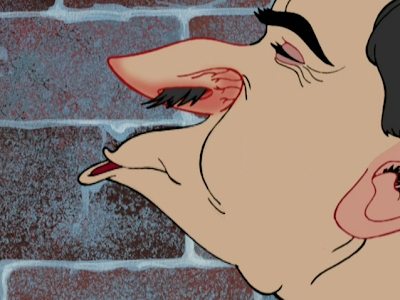
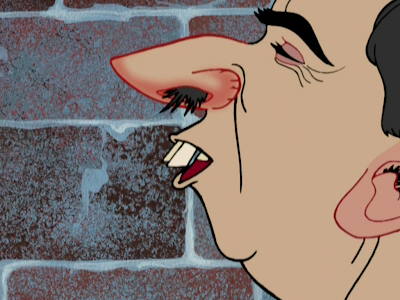
Specific Bodies
Everyone's body is as unique as their face, yet bodies are hardly ever caricatured. Usually someone has one way of drawing hands, or drawing fat, but this class will encourage students to observe how many different funny forms hands and fat can take.
Specific Expressions, Specific Gestures
I want students to constantly observe everyone around them. Be able to imitate them. Study their unique expressions, body language and gestures. There are no shortage of unique among cartoonists and animators. I've known so many that are full of individual quirks that are really funny. Amazingly these same individuals rarely put their own quirks into their cartoon drawings and animation. People automatically fall into line when they get a job and fit themselves into what they think is the correct and approved way to draw cartoons.
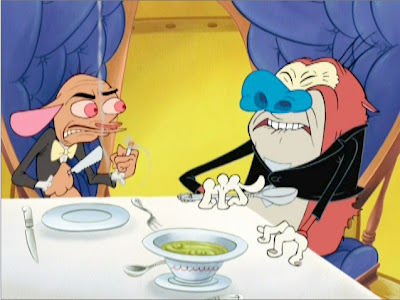 I want students to begin to get a handle on real and specific expressions , then apply them to cartoon characters. Students can pick any of a set of classic characters and draw them in specific poses and expressions. This is not an easy thing to do!
I want students to begin to get a handle on real and specific expressions , then apply them to cartoon characters. Students can pick any of a set of classic characters and draw them in specific poses and expressions. This is not an easy thing to do!Caricaturing Cartoons
The whole point of cartooning is to make fun of things. Did you know that you can make fun of people's drawings? You learn a lot that way.
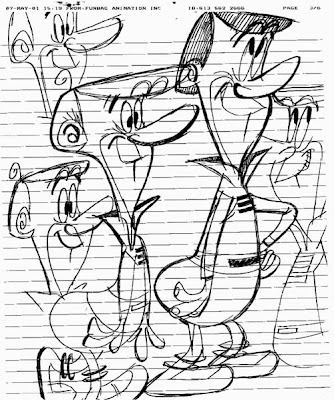
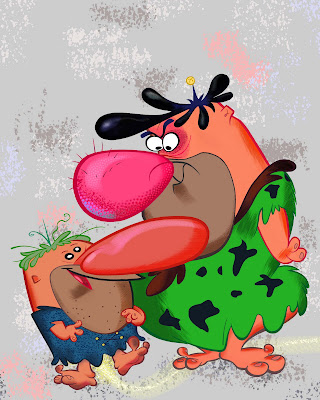
Blandness is a big obstacle to creativity in animation today. This course consists of taking cartoon drawings that others have done and doing caricatures of them. This will get the students to be more analytical, and will instill a thirst for contrasts and fun in their work.
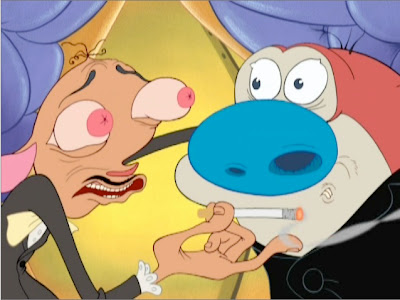 The first semester would be spent doing still drawings and analyzing contrasts in designs. The second would be animating caricatures of cartoon styles and inventing funny ways to move funny characters.
The first semester would be spent doing still drawings and analyzing contrasts in designs. The second would be animating caricatures of cartoon styles and inventing funny ways to move funny characters.This will teach students how to explore and refine creative ideas. To bring them conviction and clarity. To avoid the middle. To instill a sense of design and balance.
Character Animation
We'll study the best and funniest complex actions from classic Popeyes, Disney, Warners cartoons and animate variations using different characters.
http://johnkstuff.blogspot.com/2007/08/something-not-bland-popeye-can-you-take.html
Animating different types of designs.Walks, Dances, Rhythms
We'll study the best and funniest complex actions from classic Popeyes, Disney, Warners cartoons and animate variations using different characters.
http://johnkstuff.blogspot.com/2007/08/something-not-bland-popeye-can-you-take.html
Solving design/animation problems. Animating cartoon designs from media other than animation-comic strips, magazine cartoons, etc. Here's a few I would like to try, but there are a lot more styles to experiment with.
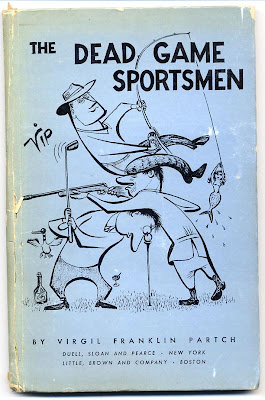
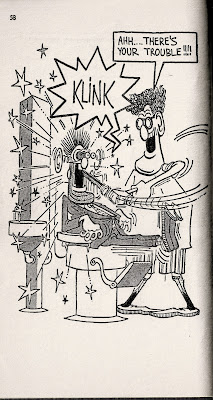
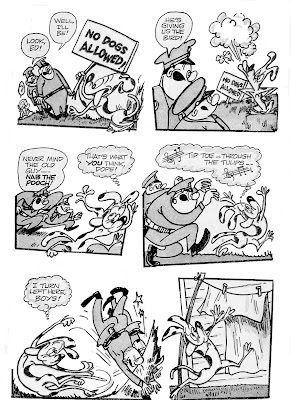
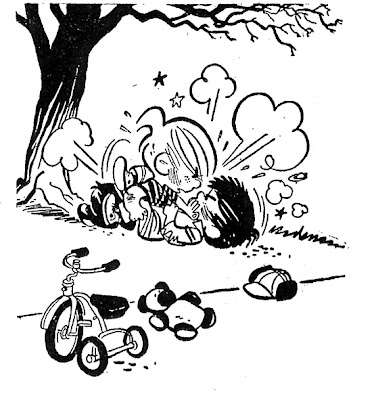
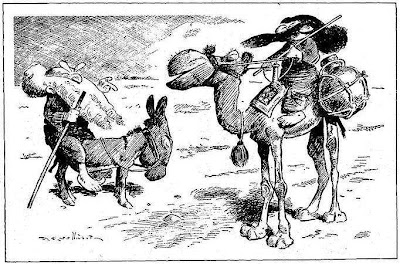
There are a small handful of design styles in animation today: The Cal Arts Style. The Spumco Style (its derivatives). The Cartoon Network Everything Has Corners Style. Each of these graphic styles come with their own set of cliched automatic motions.
They also come with severe creative limitations. I want to show students the vast variety of cartoon drawing styles that exist in other mediums and have them find ways to animate them that enhances the graphic styles - all with a mind to humor and entertainment.
This will open the students' minds to the limitless possibilities of animation that have yet to be explored.
Animating Super Structures with Varied Timings
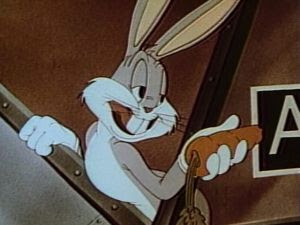 A lot of animation today consists of quick actions that zip from pose to pose and avoids any slow careful 3 dimensional motions and subtle changes of expression.
A lot of animation today consists of quick actions that zip from pose to pose and avoids any slow careful 3 dimensional motions and subtle changes of expression.This class will ask the students to do more careful and subtle types of acting and actions that don't rely on stock animation tricks.
We'll study live action actors and try to implement a wider range of timings and actions from life.
Bob McKimson's animation will set a great example of motion that doesn't cheat. Doing it the hard way.
Animating Caricatures
This class will take what was learned in the caricature classes and apply it to motion.
Students will animate characters that have the specific mannerisms and expressions that real people they have studied have.
Advanced acting, dialogue animation. Timing, pacing.
This continues the 2nd year studies.
Analysis Of Formula and Breaking Of Habits
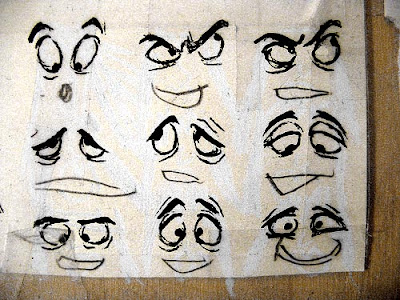 Is this all there is to be said for eye expressions? Many animators think so.
Is this all there is to be said for eye expressions? Many animators think so.Analysis and pattern recognition is the antidote to cliche. If you can see formulas, then you can break them.
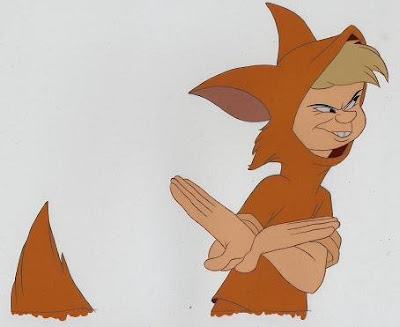 The 'tude expression formula. This is used automatically when you can't actually think up a specific expression.
The 'tude expression formula. This is used automatically when you can't actually think up a specific expression.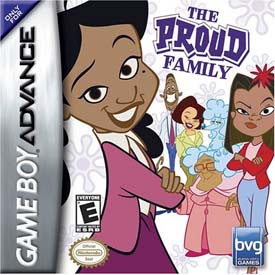
The stronger your observational abilities and your analytic prowess is, the faster you will be able to grow creatively.
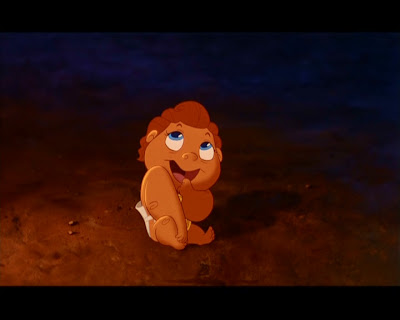 During your career you will be called upon to rely on formula and cliche, although your bosses won't call them that. If you recognize them for what they are, you can adapt quickly to different styles.
During your career you will be called upon to rely on formula and cliche, although your bosses won't call them that. If you recognize them for what they are, you can adapt quickly to different styles.If you ever get a chance to work on a project that actually demands creativity, you will be less likely to be frozen in someone else's formula.